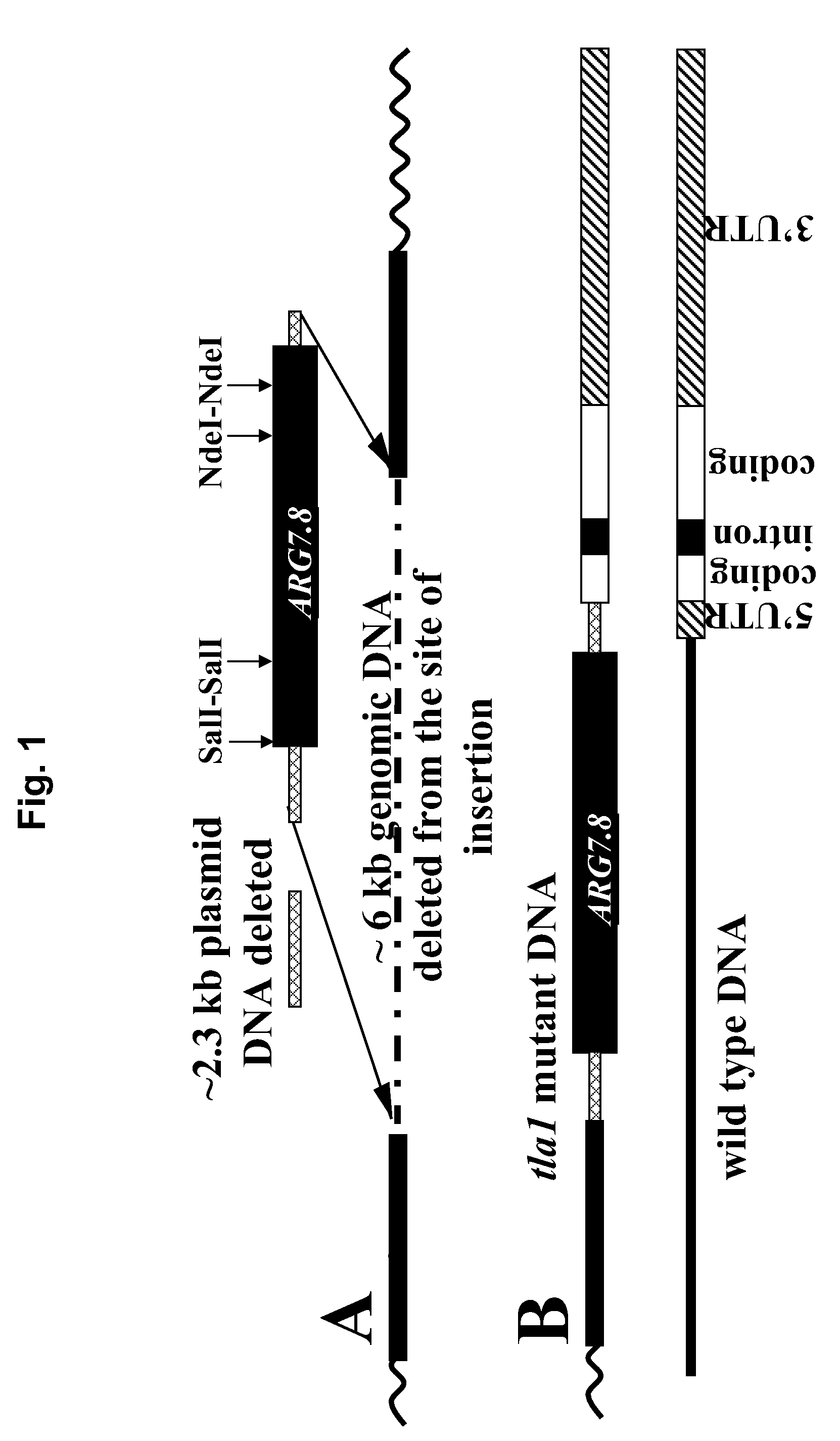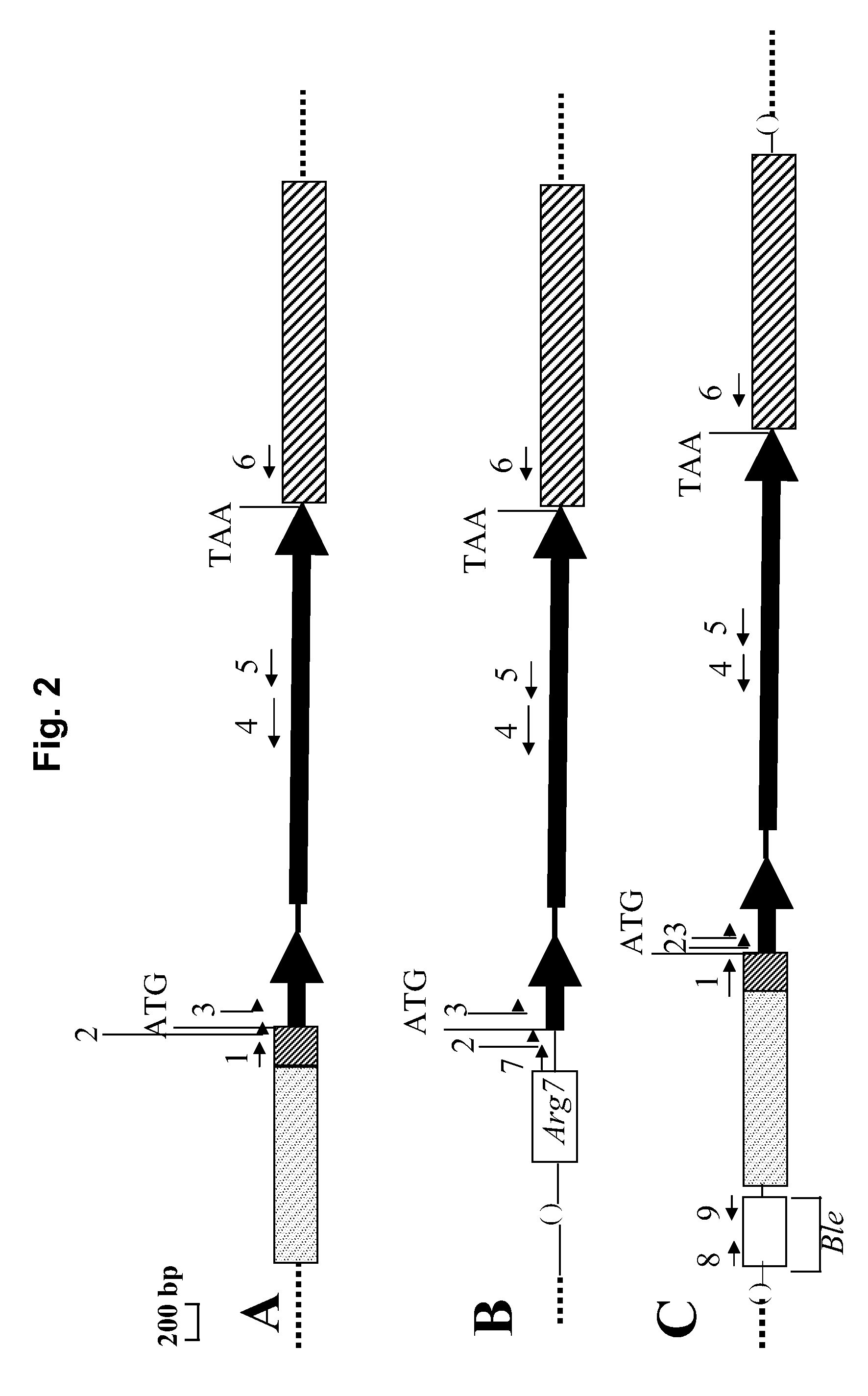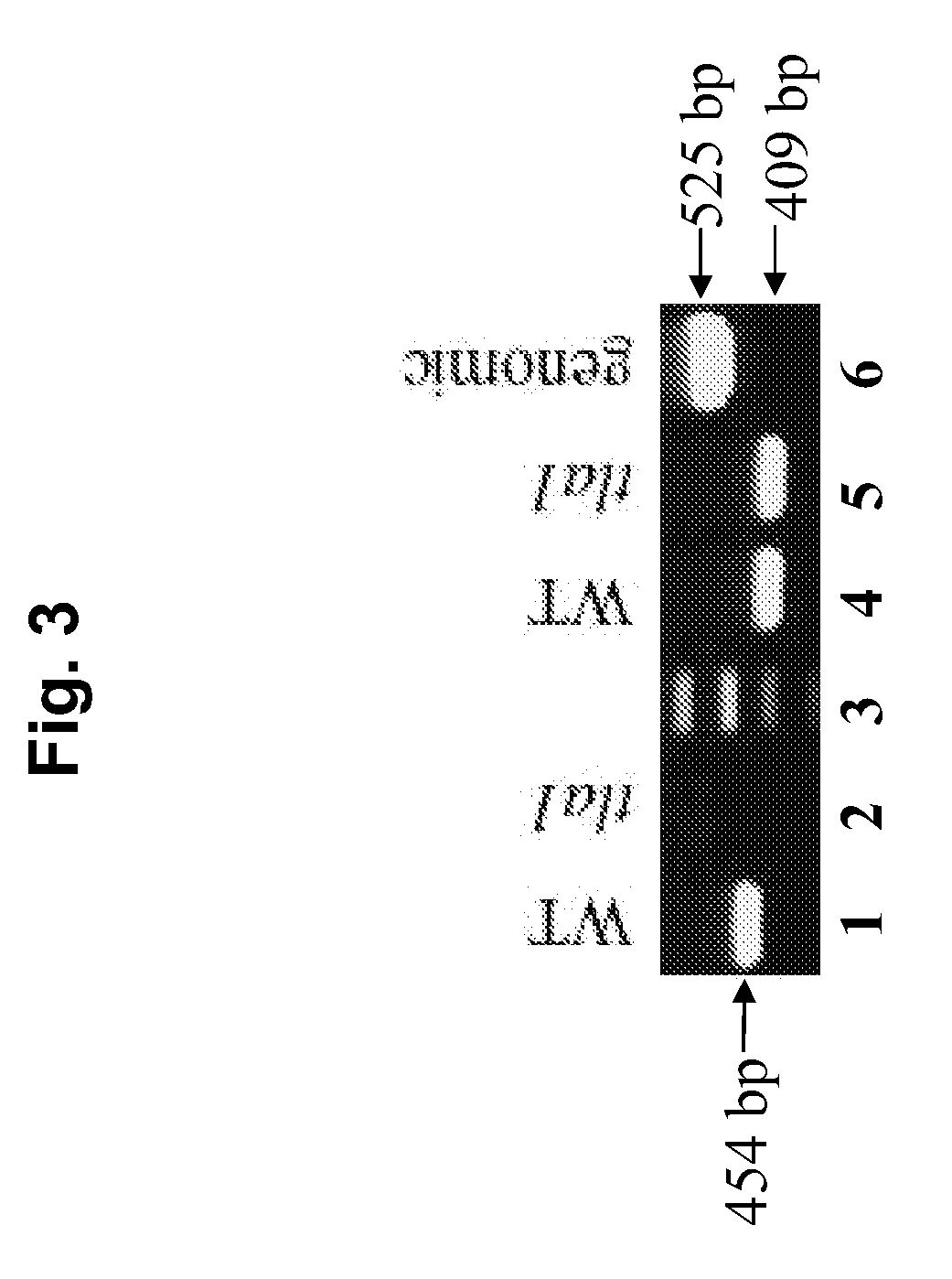Suppression of tla1 gene expression for improved solar conversion efficiency and photosynthetic productivity in plants and algae
a technology of solar conversion efficiency and photosynthetic productivity, applied in the field of tla1 gene expression suppression, can solve the problems of little knowledge about the genes and proteins and their mode of action, and no teaching of whether the phenotype was associated with increased or suppressed tla1 expression, and achieve the effect of suppressing tla1 gene expression and enhancing astaxanthin production
- Summary
- Abstract
- Description
- Claims
- Application Information
AI Technical Summary
Benefits of technology
Problems solved by technology
Method used
Image
Examples
example 1
[0113]Southern blot analyses of the Chlamydomonas reinhardtii tla1 mutant revealed a single pJD67 plasmid insert in the nuclear genome. Genetic crosses and random progeny analyses revealed that the exogenous ARG7.8 gene co-segregated with the tla1 phenotype (Polle et al. 2003, supra). On the basis of these properties, it was inferred that insertion of the pJD67 plasmid must have interrupted, or deleted, a gene that is involved in the regulation of the light-harvesting Chl antenna size of photosynthesis.
[0114]The 5′ end vector sequence information, required for plasmid rescue, had been deleted from the insert site (FIG. 1A). Thus, plasmid rescue could not be employed for the cloning of the genomic DNA that is flanking the insert. To identify the gene, two different partial genomic libraries of the tla1 mutant, representing the 5′ and 3′ plasmid insert flanking sequences were constructed and screened with appropriate probes (see Materials and methods). Three po...
example 2
Tla1 Gene Expression is Reduced in the tla1 Mutant Strain
[0123]In the subsequent more detailed biochemical and molecular analyses, a comparative and quantitative evaluation of wild type, tla1 mutant, tla1-comp1 and tla1-comp2 was undertaken. When PCR was performed on the genomic DNA using “primer 1” and “primer 4” (Tla1 5′UTR / Exon-2, FIGS. 2A and 2C) wild type, tla1-comp1 and tla1-comp2 yielded a 589 bp product, whereas the tla1 mutant failed to yield a product, consistent with the absence of its 5′UTR region (FIG. 7A). When “primer 7” and “primer 4” (pJD67 3′ end / Tla1 Exon-2, FIG. 2B) were used in the PCR reaction, the tla1 mutant, tla1-comp1 and tla1-comp2 generated a product of 684 bp whereas the wild type did not, consistent with the absence of the pJD67 plasmid in the latter (FIG. 7B). When Ble primers, “primer 8” and “primer 9” (FIG. 2C) were used for the genomic DNA PCR reaction, tla1-comp1 and tla1-comp2 yielded a product of 436 bp, whereas both wild type and tla1 mutant fai...
example 3
Analysis of Tla1 Protein
Hydropathy Analysis of the Tla1 Protein
[0128]Analysis of the N-terminus sequence of the predicted Tla1 protein by ChloroP, (http: / / www.cbs.dtu.dk / services / ChloroP / ), TargetP (http: / / www.cbs.dtu.dk / services / TargetP / ) and MitoP (http: / / ihg.gsf.de / ihg / mitoprot.html) software programs failed to indicate the presence of a transit peptide, suggesting that Tla1 is a cytosolic protein. This indication was strengthened by the results of the Western blot analysis, where the mature protein size matched the predicted translation product size, suggesting absence of a cleavable transit peptide. FIG. 11 shows the hydropathy plot of the deduced amino acid sequence of the Tla1 protein, derived according to the method of Kyte & Doolittle (Kyte and Doolittle, J Mol Biol. 157:105-32982, 1982; http: / / occawlonline.pearsoned.com / bookbind / pubbooks / bc_mcampbell_genomics—1 / medialib / activities / kd / kyte-doolittle.htm). The Tla1 protein contains 213 mostly hydrophilic amino acids, sugges...
PUM
| Property | Measurement | Unit |
|---|---|---|
| Fraction | aaaaa | aaaaa |
| Size | aaaaa | aaaaa |
| Density | aaaaa | aaaaa |
Abstract
Description
Claims
Application Information
 Login to View More
Login to View More - R&D
- Intellectual Property
- Life Sciences
- Materials
- Tech Scout
- Unparalleled Data Quality
- Higher Quality Content
- 60% Fewer Hallucinations
Browse by: Latest US Patents, China's latest patents, Technical Efficacy Thesaurus, Application Domain, Technology Topic, Popular Technical Reports.
© 2025 PatSnap. All rights reserved.Legal|Privacy policy|Modern Slavery Act Transparency Statement|Sitemap|About US| Contact US: help@patsnap.com



